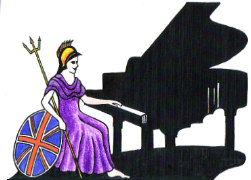Teachers, Accompanists and Piano Entertainers in the UK

UK Piano Page

C/O Unit 4 Pantheon Park, Wednesfield way
Wolverhampton, West Midlands WV11 3DS
England
Donner is a musical instrument online store.
7 - 9 Tib Street
Manchester
Manchester, Greater Manchester M4 1AD
England
C. Bechstein's Northern Flagship piano showroom
53 King Street
Cobham, Berkshire KT11 2LH
England
217 Boxley Rd
Maidstone, Kent ME14 2BH
England
Sales of new and nearly new pianos from the
266 Clyde Street
Glasgow, Lanarkshire G1 4JH
Scotland
Mclaren's is Glasgow's newest piano superstore
Music Festival for performers and guests Our 10th
18-06-2022 12:30PM
The Morecambe Bay Piano Group was set up to extend
11-12-2021 01:00PM
The Morecambe Bay Piano Group was set up to extend
08-01-2022 01:00PM
The Morecambe Bay Piano Group was set up to extend
12-02-2022 01:00PM